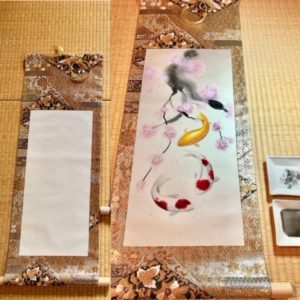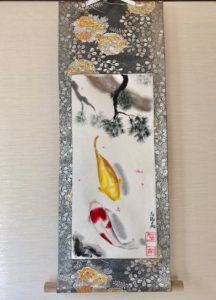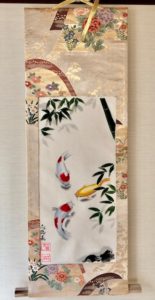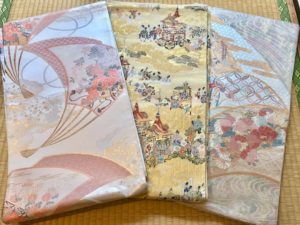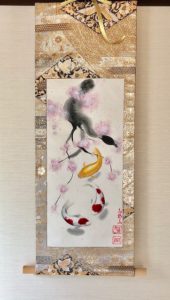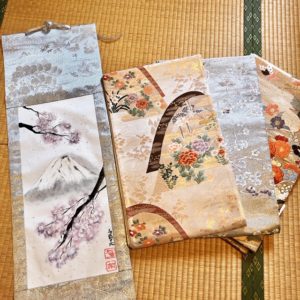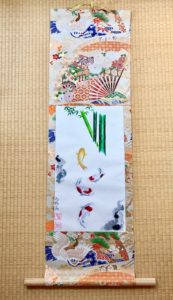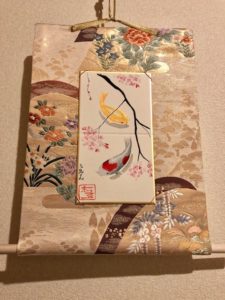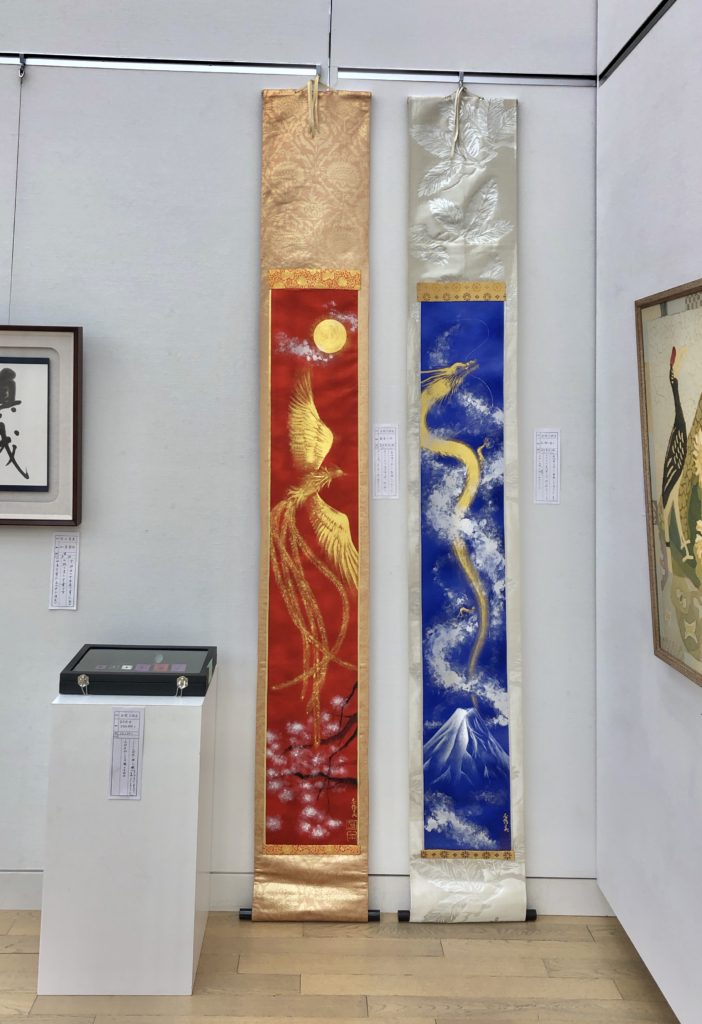
I had a grateful opportunity to exhibit my artworks at National Art Center in January 2023.
Thank you so much for all who supported and came to see my artworks.
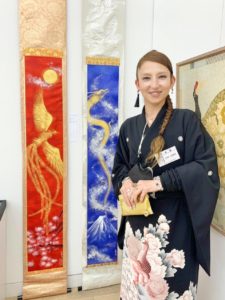

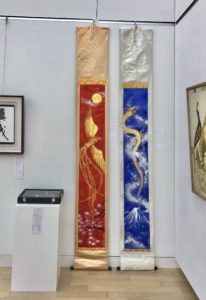
p
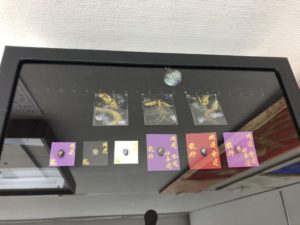
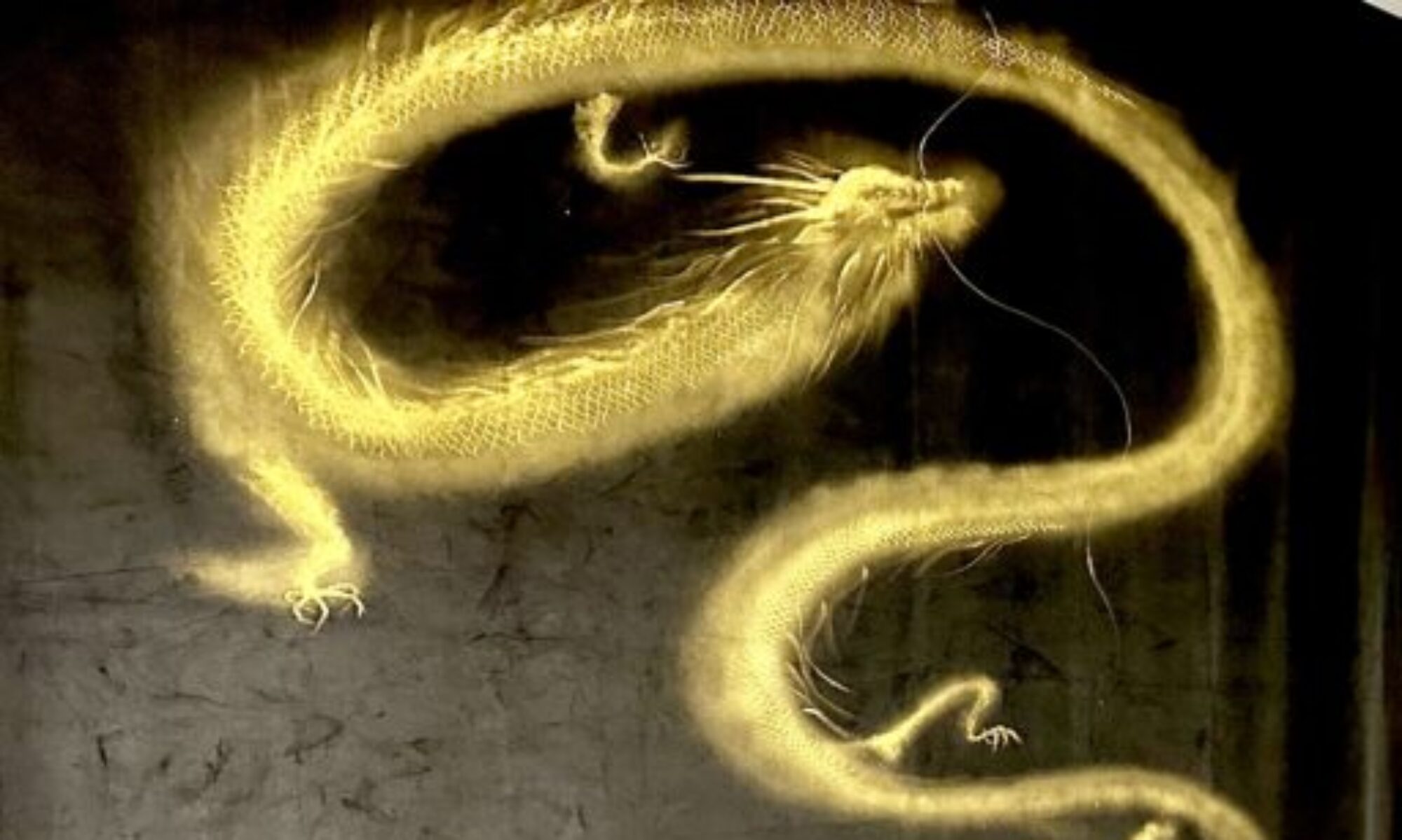
Connect Japan and the world through Japanese spirituality| Japan Cross Bridge|Tokyo
Express Japanese art and culture to the world

I had a grateful opportunity to exhibit my artworks at National Art Center in January 2023.
Thank you so much for all who supported and came to see my artworks.



p

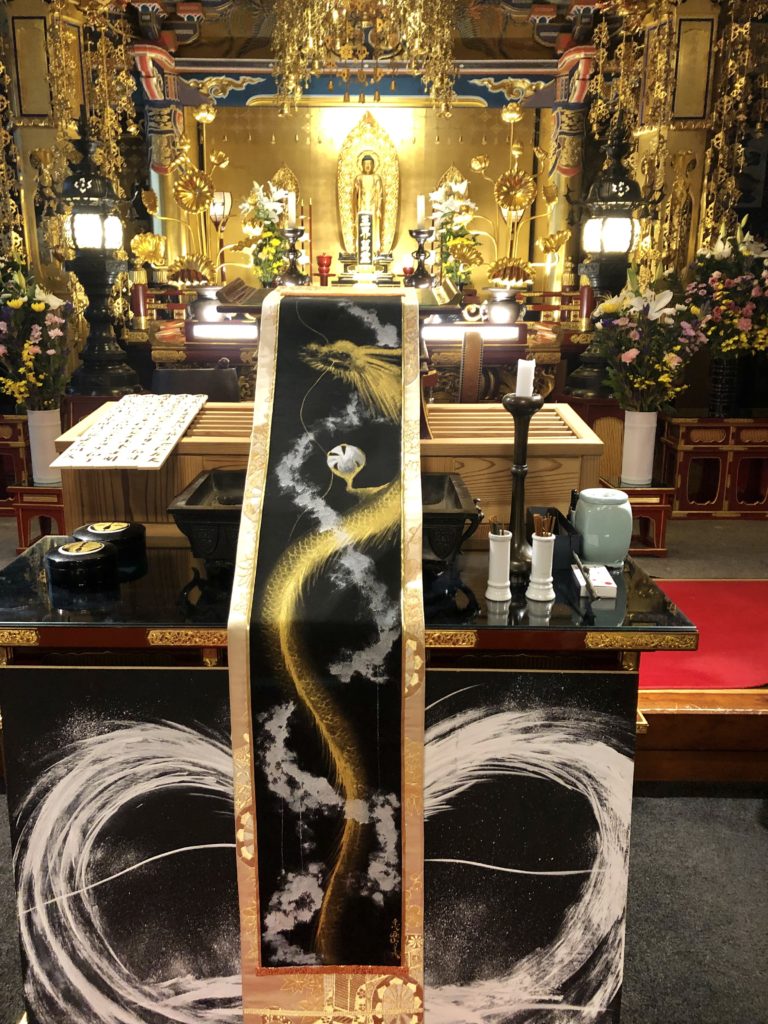
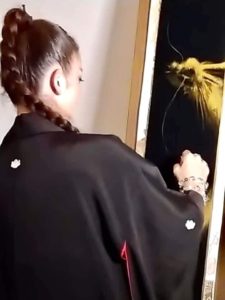
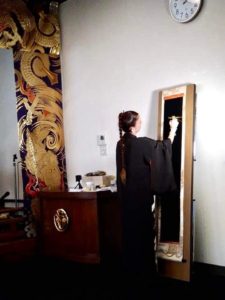
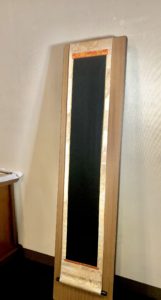
I had a great opportunity to dedicate my RYU dragon Kakejiku with live painting at Enno-ji temple in Fukuoka 2022, October 4th.
It was a wonderful serene atmosphere inside the main hall of Buddha.
The priest recited sutra for one hour, and I painted RYU dragon on my Kakejiku while he was reciting.
I am so grateful that I had this great opportunity.
Thank you so much.
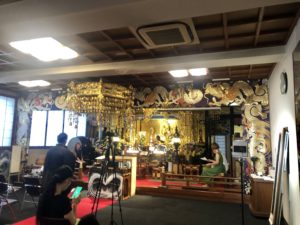
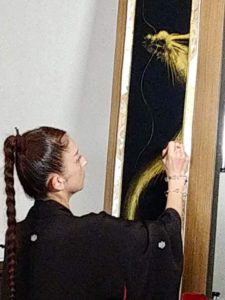

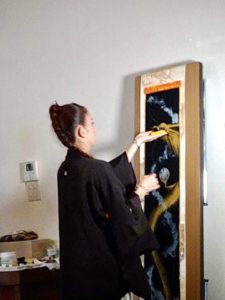
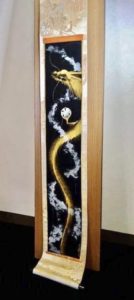
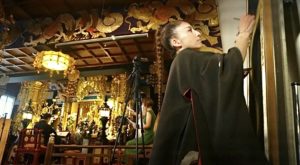
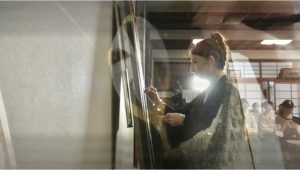
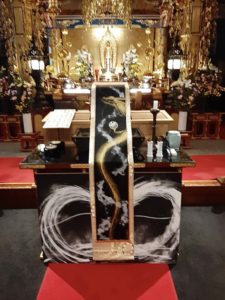
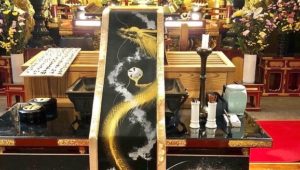
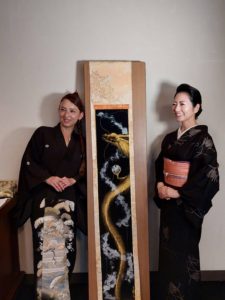
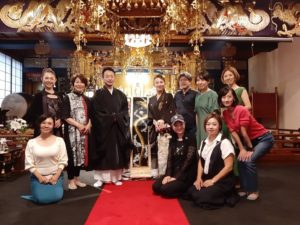
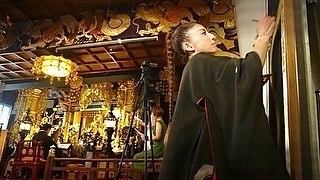
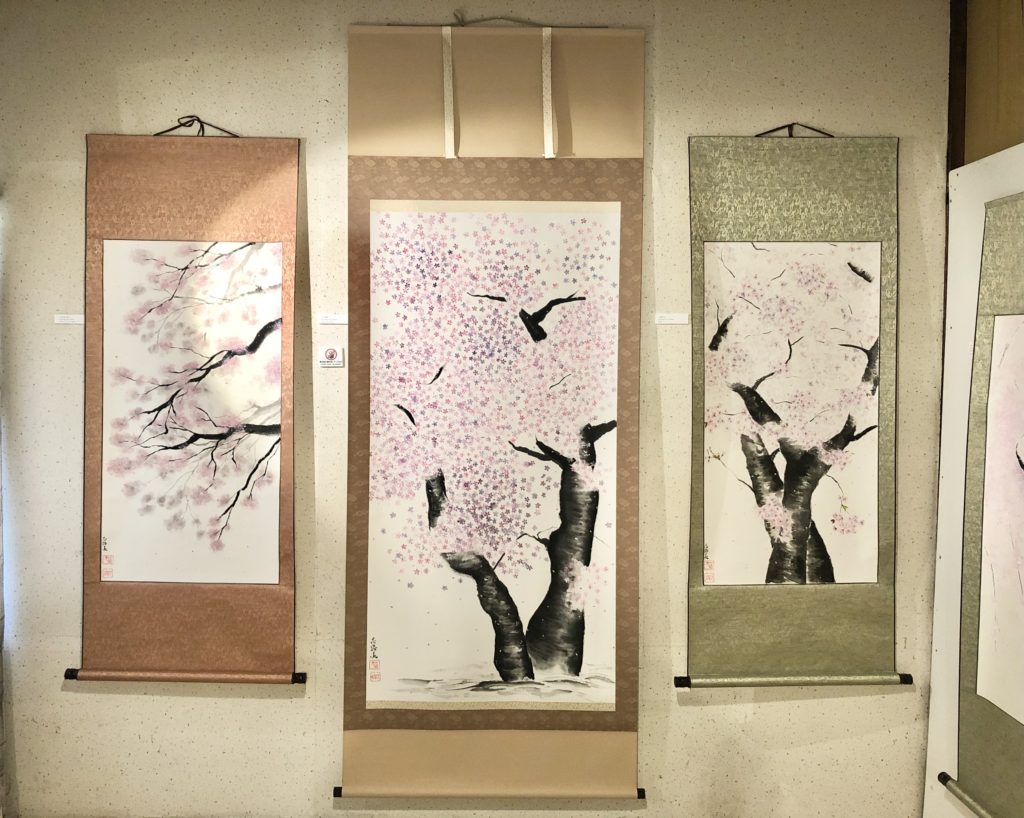
I love to make cherry blossom themed artworks, so I wanted to hold my solo exhibition during the cherry blossom season. I am really grateful that I could hold my first solo exhibition in a nostalgic Japanese old house near Meguro river, Tokyo, where cherry blossoms are really famous. This exhibition is already one of my best memories.
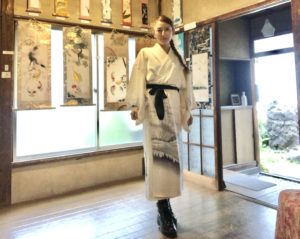
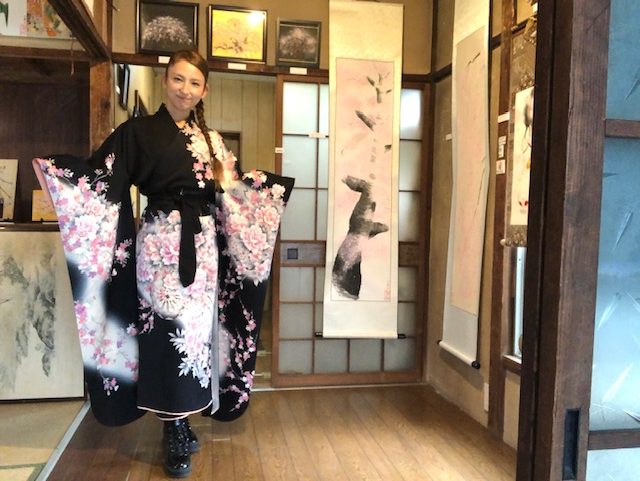
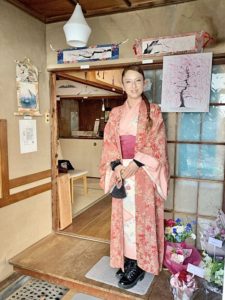
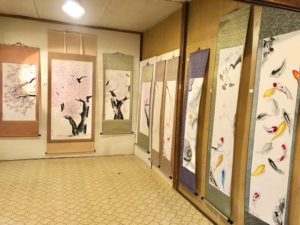
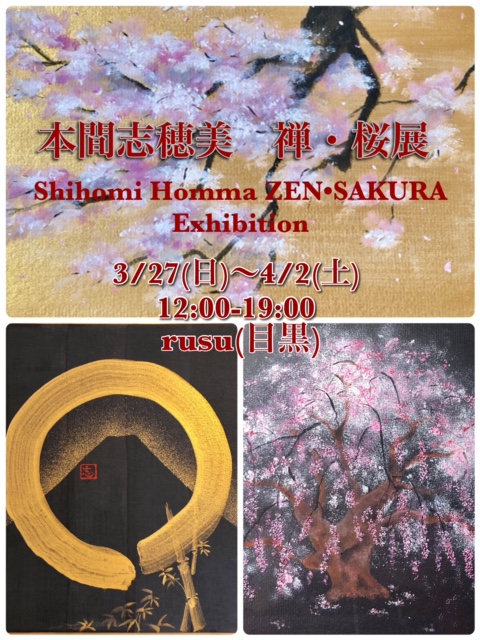
“Shihomi Homma ZEN•Sakura Exhibition” is at “rusu” near Meguro river on March 27-April 2.
Admission free.
Gallery “rusu”
9 mins walk from JR Meguro Station
3-4-9 Shimomeguro, Meguro ku, Tokyo
March 27(Sun) – April 2(Sat)
12:00-19:00
桜の季節に禅桜展を開催。
目黒駅の目黒川からほど近い昔懐かしい民家のrusuにて、個展を開催させていただく運びとなりました。
日本の桜、禅をテーマにした水墨画掛け軸などのアートを展示いたします。
これまでJapanCrossBridge(日本と海外の架け橋)として、日本の美や象徴をモチーフとしたアート作品を海外へ発信して参りました。
コロナ渦の中、日本国内でも日本の桜をテーマとした作品を桜の時期に一人でも多くの方にご覧いただければ幸いです。
お花見へ目黒川お越しの際は是非お立ち寄りください。
ギャラリー”rusu” JR目黒駅より徒歩9分
東京都目黒区下目黒3-4-9
3/27(日)〜4/2(土) 12:00-19:00
入場無料
Facebook: https://www.facebook.com/japancrossbridge/
Instagram: https://www.instagram.com/japan_cross_bridge/
個展情報掲載サイト Exhibition information site
http://artmeguri.com/zensakura/
https://www.share-art.jp/event/views/292794
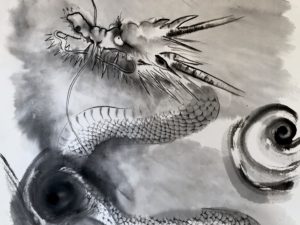
The difference between 龍(Ryu) and Dragon
I started painting 龍(Ryu) and now I am attracted to 龍(Ryu).
When we try to translate 龍(Ryu) into English, it is often said “dragon”.
However, dragons in European countries and 龍(Ryu) in Eastern countries like Japan are totally different.
In eastern countries and Japan, 龍(Ryu) is called “RYUJIN” and it is a god.
On the other hand, in European countries, dragon is a bad evil creature.
They look alike but they are not the same.
Dragon has wings and its face is more like a lizard, on the other hand, RYUJIN’s face is more like a snake.
What is in common is, they are both imaginary reptile creatures.
Personally, I like Japanese RYUJIN better, as RYUJIN has a longer body and looks cool.
Japanese RYUJIN can often be seen at temples or shrines.
At the entrance of temples and shrines, there is a water running spot, called “Temizusha”(手水舎).
This is a place to cleanse our hands and mouth before entering temples and shrines.
There, you can see water is running from RYUJIN’s mouth.
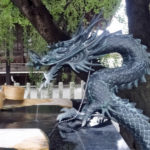
RYUJIN has been believed to be a god which brings rain and brings good harvest.
We see many Kakejiku paintings of RYUJIN going up to the sky, surrounded with rain clouds which RYUJIN created by itself.
There is also a sacred ball which RYUJIN holds.
It is called “Cintamani stone”, which makes your dream come true.
RYUJIN god is a very precious, good luck symbol.
That is why we have RYUJIN god Kakejiku hanging scrolls hung in the house since ancient times.
By the way, why does good luck god have that scary face…?
Hanging RYUJIN Kakejiku hanging scroll doesn’t make kids get scared at night…?
But there is a reasonable reason.
In order to fight and get away the evil spirit, RYUJIN has such a scary face.
Same as Tiger Kakejiku.
We often see Tiger glared at us with its powerful scary eyes on Kakejiku.
That is to fight and get away the evil spirit.
Anyway, I am attracted to RYUJIN,
and my RYUJIN art is increasing little by little…
“RYUJIN god is a god of water. Human beings cannot live without water. That means we human cannot live without RYUJIN god.”
Drawing RYUJIN god is a great practice of life for me.
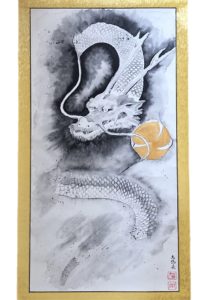

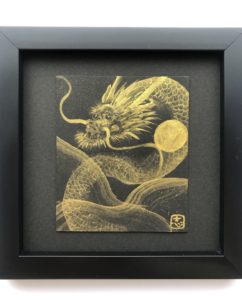
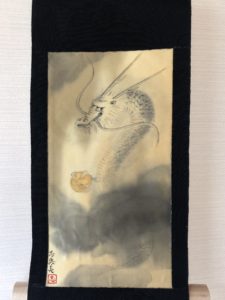
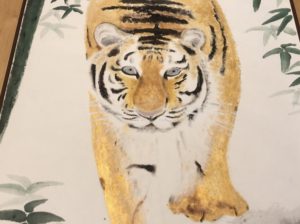
Tiger on Kakejiku art
Tigers are one of the very popular subjects on Japanese Kakejiku art.
Kakejiku is Japanese traditional hanging scroll.
It is hung on the wall in Japanese style room, especially on alcove “Tokonoma”, since ancient time.
Tiger is a powerful animal, and Tiger painting on kakejiku has an important meaning.
When tiger is glaring at this way, that means tiger is glaring at the evil in your place.
Tiger’s powerful eyes are believed to have the power to beat the evil.
So tiger’s scary expression is protecting your place and the people living in your place.
Tiger painting Kakejiku has a strong good luck power.
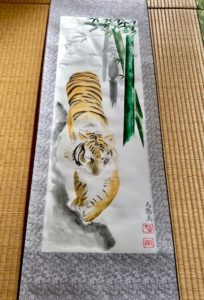
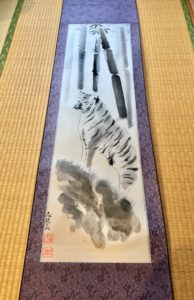
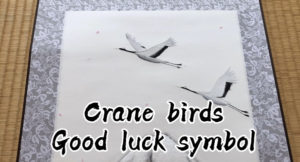
Crane birds – Japanese good luck symbol
We, Japanese have a deep connection with crane birds since ancient times.
The beautiful crane birds can be seen in many occasions, such as Japanese old stories, music, paintings, and so on.
Crane birds are not just beautiful but also thankful, as they are symbols of long life, prosperity and a good luck.
In Japanese phrases, we have “crane birds live a thousand years, turtles live a ten thousand years”
Also crane bird’s voice is said to reach to the heaven, as they cry loudly.
When crane birds make a couple, they stay forever and never separate.
So we symbolize crane bird couple as “good married couple”.
Especially at weddings, we use crane birds in many situations, for special wedding kimono pattern, for wedding venue decorations, or on celebratory statement.
As crane birds are grateful good luck symbols, we believe that owning something with crane bird motif will bring us a good luck and a healthy long life.
I love to paint these beautiful birds, crane birds on my hanging scrolls too.
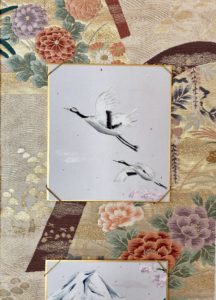
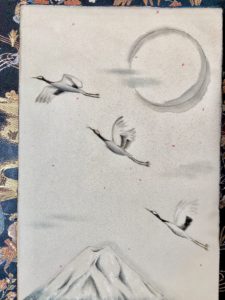
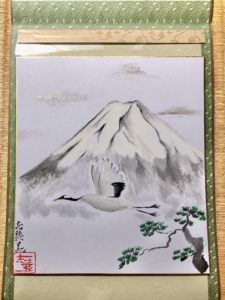
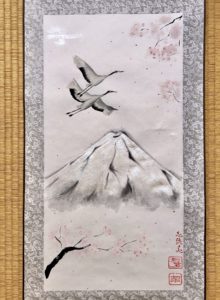
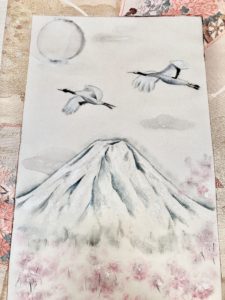
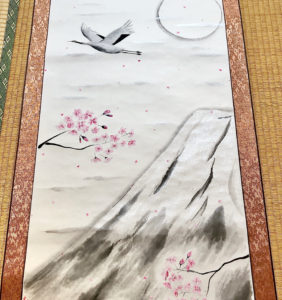
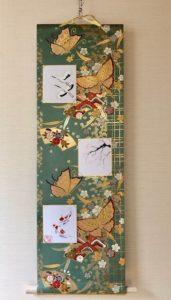

Japanese EMAKIMONO style hanging scroll
First of all, what is EMAKIMONO??
Emakimono – “E” means “pictures”, “makimono” means “scroll” in Japanese.
Emakimono is a Japanese traditional horizontal scroll which tells stories with pictures.
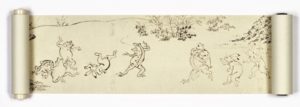
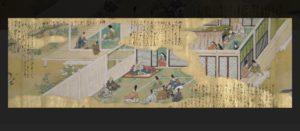
From right side, we unroll the scroll to the left, and illustrations tell you Japanese narrative.
So Emakimono usually is a few meters long, sometimes even 20 meters long!
The oldest Emakimono that still exists is believed to made in Nara period, AD 710 to 794.
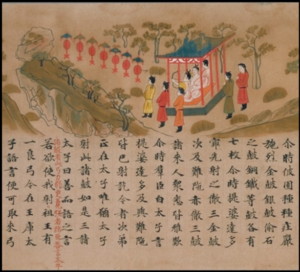
I made Emakimono style scroll with Japanese scenery painting.
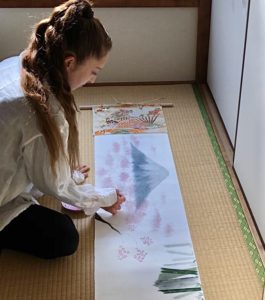
To make this unique scroll, I used Precious Kimono silk obi belt for both ends.
It is woven with silk and making gorgeous patterns.
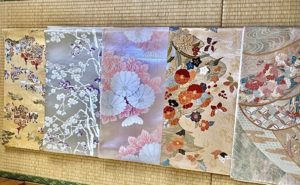
In the center painting area, I used white silk kimono fabric.
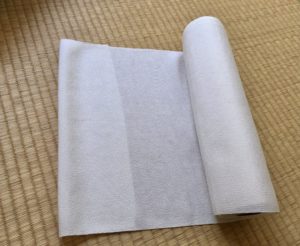
This white silk fabric is thin and soft, so I attached Special Japanese paper called “urauchi youshi”, on the back to make it stronger and harder.
This special paper has glue on one side and by ironing, I can attach this paper to the silk fabric.
I made this scroll with 2 meters long, so this can be hung on the wall in the rooms easily.
This Emakimono style horizontal scroll allows me to draw Japanese landscape scenery.
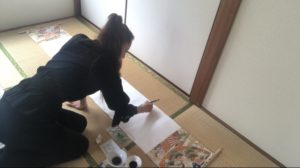
I really love to draw Japanese symbols, especially Mt. Fuji, Sakura cherry blossoms, Bamboo, and Koi fish.
Those symbols express Japanese beauty, and every time I draw them, I find myself being in love with them more and more.
In the past, I painted these symbols a lot on Usual Kakejiku hanging scrolls (Vertical scroll), but especially this horizontal scroll has enough space for me to draw all in here.
That’s what I wanted to make.
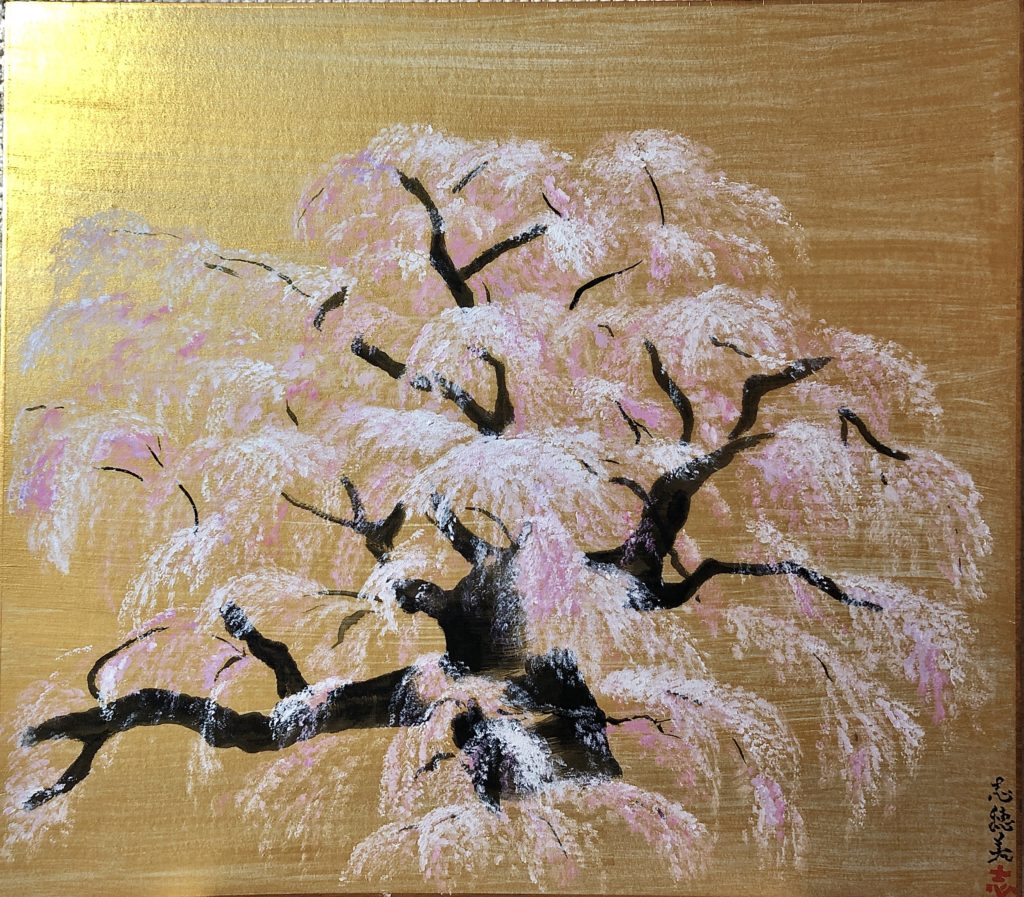
The reason why cherry trees were planted.
Have you ever thought about the reason why cherry trees were planted?
In Japan, we can see so many cherry trees in everywhere.
Many of them are really old, few hundred years old.
An interesting point is, many cherry trees are planted by rivers.
This has a reasonable reason.
Ancient Japanese people planted cherry trees by rivers, so that many people would come and see the beautiful cherry blossoms.
They knew that many people visiting and walking there, would help make the soil harden, and help make the solid river bank.
So cherry trees were planted as a flood control measures.
Another interesting point is, that many cherry trees are in shrines and temples as well.
Shrines are Shintoism, and originally have deep relations with pine trees, but not with cherry trees.
However, people thought cherry blossoms’ gracefulness symbolizes the samurai spirit, and many shrines preferred to plant cherry trees as well.
Temples are Buddhism which has the deep relations with flowers.
They admired cherry blossoms as well as plum blossoms.
We cannot talk about Japanese history without the relations with temples.
Muromachi era, Sengoku era, around 13C to 16C, many temples already had cherry trees.
Famous Samurai and shogun enjoyed Sakura viewing “Ohanami” since then.
In Japan, people enjoy Sakura viewing “Ohanami” since ancient time, and this is a Japanese culture.
Many famous Sakura spots in Kyoto and Nara are in temples and shrines.
In Tokyo too, many famous Sakura spots are in temples and shrines, as well as by rivers, or near the water.
Ueno park, where many people visit for Sakura viewing, was once a temple.
Imperial palace is surrounded with moat.
Meguro river, Kanda river, Sumida river, Tamagawa river, Arakawa river, are all famous Sakura spots.
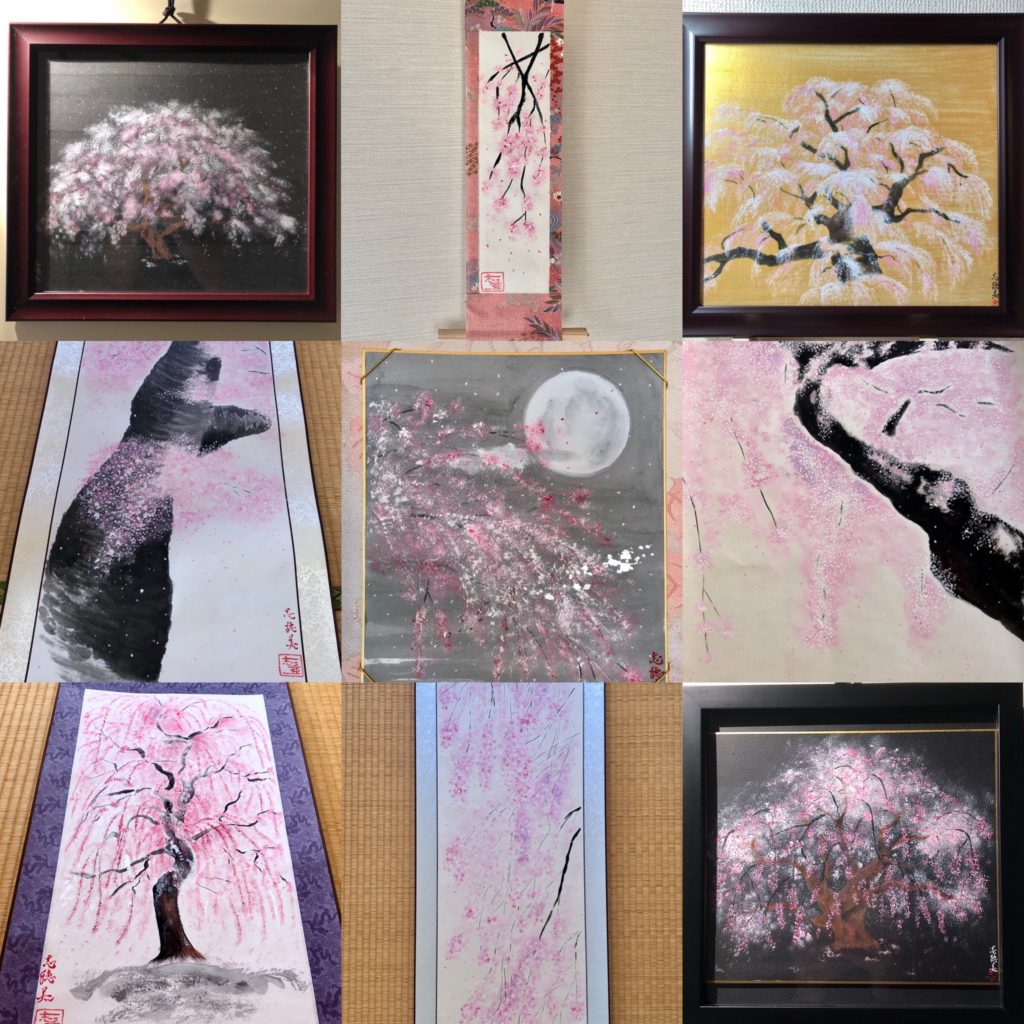
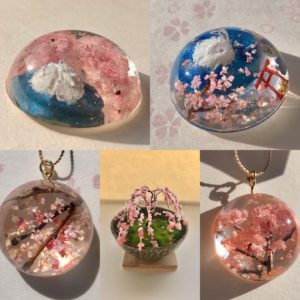

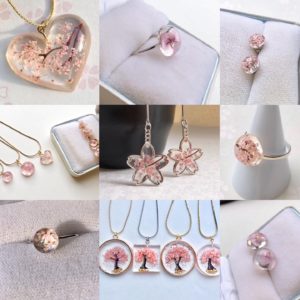
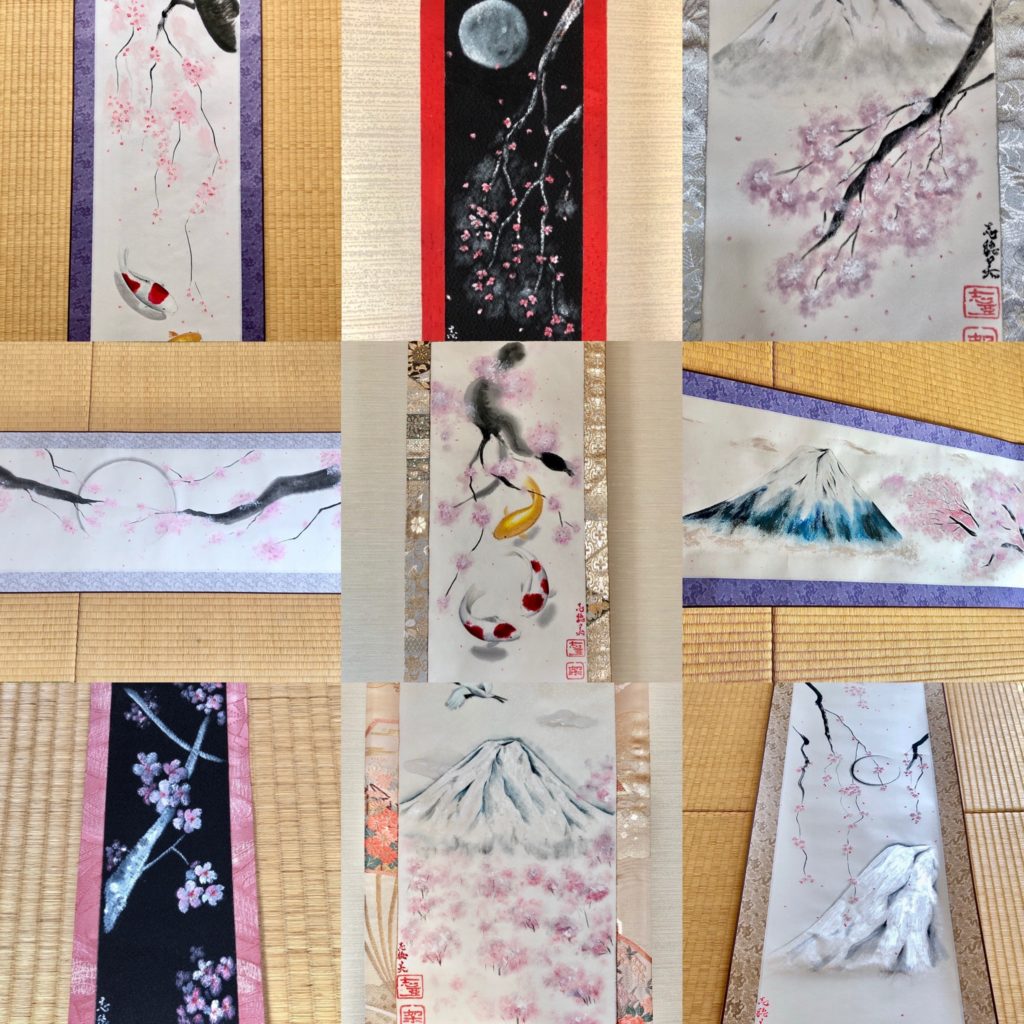

Kimono is Japanese traditional fashion and culture.
All Japanese people used to wear Kimono every day long time ago, and Kimono was our clothes.
But we wear Kimono only occasionally now, especially on special occasions such as weddings, new years, come of age day cerebration, or tea ceremony.
And Kimono we wear on those special occasions are really gorgeous.
Depends on the seasons, Kimono fabric can be silk, cotton, or wool.
Kimono Obi Belt is inevitable to wear Kimono.
Obi belts are quite wide and stands out in the center of our body, so it is very important.
There are different kinds of Obi belts, called Nagoya-Obi, Fukuro-Obi, Han Haba- Obi.
Han-Haba Obi is used for daily Kimono or Yukata (summer cotton Kimono), and casual.
Nagoya-Obi also can be used for daily Kimono, or Japanese cultural practice such as tea ceremony or flower arrangement.
Fukuro-Obi is the most gorgeous belt and is for weddings or cerebrations.
When you look at Fukuro-Obi, you will see how gorgeous, shiny it is and the pattern is an amazing art.
When you touch Fukuro-Obi, you can feel that Fukuro-Obi is really precious.
Fukuro-Obi can cost a fortune, sometimes over one million yen.
Fukuro Obi is woven with shiny gold, silver thread, silk thread by artisans.
This is totally Japanese amazing culture.
When this precious Kimono Obi belt turns into hanging scroll, it starts another new life.
We are honored to be able to make gorgeous hanging scrolls with them.
